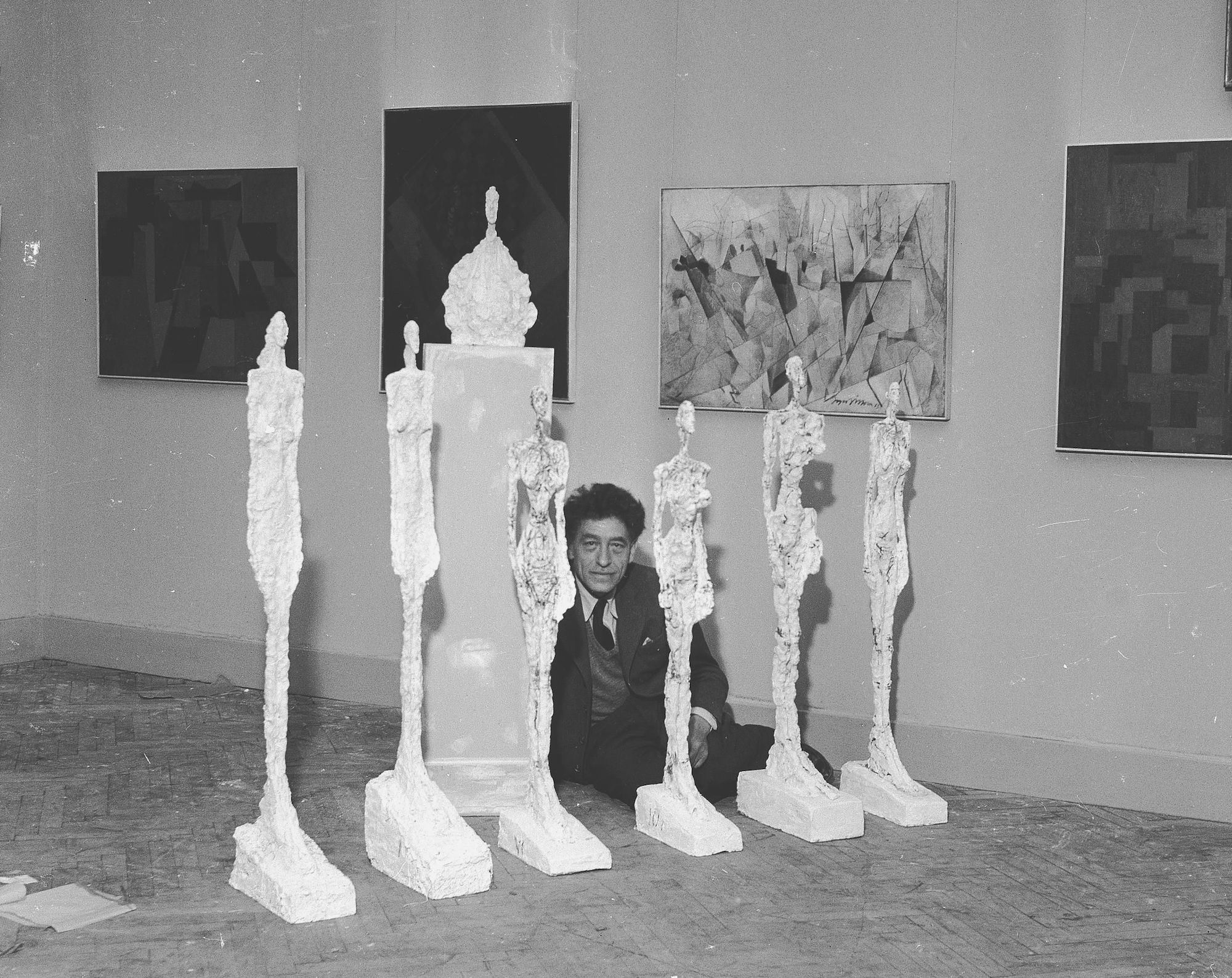
Ahead of its Alberto Giacometti retrospective, slated to open on May 10, London’s Tate Modern has released a tantalizing teaser about some of the specific works that will be shown as part of this hotly anticipated blockbuster.
Fans of Giacometti will be chuffed to learn that Women of Venice, a group of six plaster sculptures created for the 1956 edition of the Venice Biennale—in which the Swiss artist represented France—will be reunited for the very first time in 60 years.
At Tate, Women of Venice will be shown alongside two other plaster sculptures from the same series, which Giacometti unveiled that same year at the Kunsthalle Bern.
Giacometti created the legendary group of sculptures—which are based on his wife, Annette, one of his key models—over the course of three weeks, during which he molded each sculpture in clay, before casting them in plaster and then reworking them with a knife, to texturize their surface.
Alberto Giacometti, Woman of Venice IV (1956) Collection Fondation Alberto et Annette Giacometti, Paris. Photo ©Alberto Giacometti Estate, ACS/DACS, 2017.
The sculptures have been painstakingly reassembled and restored for the retrospective at Tate Modern by the Alberto and Annette Giacometti Foundation in Paris.
The careful restoration—which entailed bringing the artworks back to their original state and showing the paintwork and penknife marks not visible on the later bronze casts—will allow viewers to see how Giacometti embellished the surface of several sculptures with red and black paint. This will provide a rare opportunity to discover Giacometti’s explorations of materials beyond bronze, for which he is best known.
“This is one of the most ambitious restoration projects that the foundation has undertaken and it is very exciting that they wish to do it for Tate,” Frances Morris, director of Tate Modern, told the Guardian. “I have to say it is only for Tate, because despite the restoration the works will in perpetuity be very vulnerable.”
According to the Guardian, once the London exhibition is over, the sculptures will return to the foundation in Paris, where they will be available for viewing to scholars and visitors, but won’t be loaned again due to their fragility.
The Tate has a long-standing relationship with Giacometti’s work, buying artworks by him as early as 1949, before he became a favorite of French museums. The London institution also mounted a large retrospective of his work in 1965, a year before his death in 1966.
“Giacometti loved the Tate. It has been a long time coming, this tribute to Giacometti, and it is a kind of posthumous thank you,” Morris told the Guardian. “I love to think it will bring back any people who saw the show in 1965 and will also be a really compelling draw for our younger audiences.”